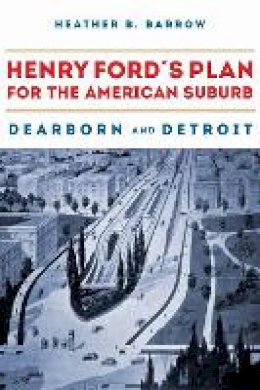
Henry Ford and the Suburbanization of Detroit
Heather Barrow
Around Detroit, suburbanization was led by Henry Ford, who not only located a massive factory over the city's border in Dearborn, but also was the first industrialist to make the automobile a mass consumer item. So, suburbanization in the 1920s was spurred simultaneously by the migration of the automobile industry and the mobility of automobile users. A welfare capitalist, Ford was a leader on many fronts—he raised wages, increased leisure time, and transformed workers into consumers, and he was the most effective at making suburbs an intrinsic part of American life. The decade was dominated by this new political economy—also known as "Fordism"—linking mass production and consumption. The rise of Dearborn demonstrated that Fordism was connected to mass suburbanization as well.
Ultimately, Dearborn proved to be a model that was repeated throughout the nation, as people of all classes relocated to suburbs, shifting away from central cities. Mass suburbanization was a national phenomenon. Yet the example of Detroit is an important baseline since the trend was more discernable there than elsewhere. Suburbanization, however, was never a simple matter of outlying communities growing in parallel with cities. Instead, resources were diverted from central cities as they were transferred to the suburbs. The example of the Detroit metropolis asks whether the mass suburbanization which originated there represented the "American dream," and if so, by whom and at what cost. This book will appeal to those interested in cities and suburbs, American studies, technology and society, political economy, working-class culture, welfare state systems, transportation, race relations, and business management.
Product Details
About Heather Barrow
Reviews for Henry Ford and the Suburbanization of Detroit
Journal of Historical Geography
Barrow] skillfully weaves together the historical, economic, and geographic literature with archival sources, including workers' oral histories.... Barrow's book will be of use to historians and economists, both students and professionals, interested in the history of Ford, Detroit, and Dearborn, and the interplay of economics and geography in that history.
Journal of Economic History
Barrow's insightful research brilliantly reevaluates the objectives of welfare capitalism and the origins of suburbanization. This timely and erudite volume is essential reading for understanding the metropolitization of Detroit.
The Michigan Historical Review
This is an engaging book that is a welcome contribution to the literature. Scholars of history and urban studies will greatly appreciate because it reveals a more complex historiography of the process of suburbanization.
Housing Studies
This is an important and insightful book. Not only does Barrow provide a new perspective on Henry Ford and his role in urban planning, she sets the process of suburbanization within the context of race, class, and public transportation, suggesting the cost of the American dream for some was a divided metropolis and in the case of greater Detroit, a hollowed-out core.
Middle West Review
